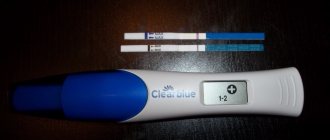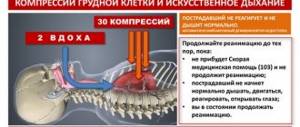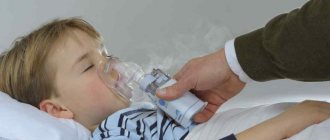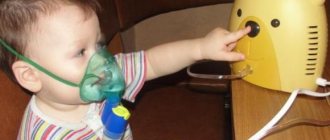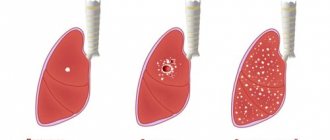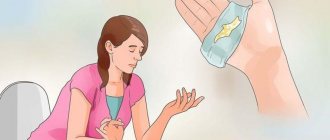According to statistics, respiratory tract diseases occupy the first place in both children and adults. One of the most common of them is bronchitis of various etiologies. Probably each of us remembers how, as a child, our mother or grandmother persuaded us to sit over the steam. Are inhalations effective for bronchitis today, how to do them correctly - let's try to figure it out.
The essence of the procedure
Inhalation is a technique for administering a medicinal substance so that it immediately reaches the surface of the mucous membrane of the respiratory organs. This occurs by turning the medicine into a vapor state or breaking it down into tiny particles. Thus, the suspension with air spreads throughout the bronchial tree.
In addition, upon contact with the mucous membrane, the medicine begins to immediately have a therapeutic effect. This is what determines the faster therapeutic effect of inhalations. It is not surprising that due to the simplicity of this procedure and high therapeutic effect, it is successfully used both in healthcare institutions and at home for children.
When prescribing inhalations for bronchitis, the doctor strives to solve the following problems:
- dilute the discharge of the nose and larynx;
- moisturize the mucous membrane;
- By introducing medications through inhalation, you can achieve antibacterial, anti-inflammatory, and anti-edematous effects.
Solutions for inhalation
For inhalation, decoctions and infusions of medicinal herbs, antibiotics, mucolytics, aromatic oils and other substances that have a therapeutic effect are used.
- Anti-inflammatory drugs and antibiotics - used when using a nebulizer:
- 4% gentamicin - used for chronic bronchitis, for 1 procedure use 2 ml of gentamicin dissolved in 3 ml of 9% saline solution.
- 0.5% dioxidin - a broad-spectrum anti-inflammatory agent - 5 ml of the substance per 1 application
- Interferon is an antiviral drug that enhances immunity - 1 ampoule of dry powder is diluted in 5 ml of 9% saline solution.
- fluimucil is a broad-spectrum antibiotic - 1 inhalation requires half a bottle of powder dissolved in 5 ml of saline solution.
- Mucolytics are drugs that thin mucus and help with expectoration. Used for dry, painful coughs, contraindicated for wet coughs and expectoration of sputum:
- Lazolvan - powder is mixed with saline in a 1:1 ratio, 2-3 ml are needed for 1 inhalation.
- Atrovent - used only for chronic obstructive bronchitis, available in 20 ml bottles, 2-3 ml are used for 1 inhalation.
Any of these remedies should be used only as prescribed by a doctor and according to strict indications.
Inhalation using a nebulizer
Inhalations for bronchitis are most conveniently performed with a nebulizer. It allows you to easily and quickly transform liquid into an aerosol, which can easily penetrate the patient’s respiratory tract.
Types of nebulizers:
- Ultrasound – well suited for influencing the nasopharynx, trachea and bronchi.
- Compression - will ensure the penetration of the medicine into the bronchi and alveoli.
- The electronic mesh is the most powerful nebulizer; it allows you to reach the lowest parts of the lungs and is especially recommended for use when treating children, as it works at any angle of inclination.
Purpose
Modern treatment methods include the use of inhalers both for bronchitis and for a variety of pathologies of the respiratory system:
- ARVI with severe inflammation of the respiratory tract (the patient has a severe cough, pain, severe swelling of the mucous membrane);
- inflammatory diseases of the upper and lower parts of the DP, both independent and occurring against the background of other chronic diseases;
- for acute and chronic obstructive bronchitis;
- asthma;
- bronchiectasis;
- fungal infections of the DP;
- cystic fibrosis;
- prevention of complications in the postoperative period.
When are inhalations needed for bronchitis?
Bronchitis can be of viral or bacterial origin; inhalation helps soften viscous mucus and improve sputum discharge in any form of the disease. During the sessions, the mucous membranes are moistened, the lumen in the bronchi expands, and manifestations of inflammation disappear.
Indications:
- obstructive bronchitis;
- tracheobronchitis;
- Chronical bronchitis;
- allergic bronchitis.
If bacterial bronchitis is accompanied by pus discharge and hyperthermia, this medicinal method is not suitable. An exception is obstructive bronchitis; inhalations with bronchodilators eliminate spasms and prevent an attack of suffocation.
The main advantage of inhalations is that medications penetrate to the affected areas, bypassing the gastrointestinal tract, which reduces the risk of developing negative reactions during therapy.
Execution technique
In order for inhalation to bring maximum results, you must follow certain rules:
- It is better to carry out the procedure after eating, but not immediately, but after an hour and a half;
- clothing should not make breathing difficult;
- the procedure can only be performed while sitting or standing;
- the inhaler solution for bronchitis at home must be fresh, medications can be stored in the refrigerator for no more than 14 days;
- steam inhalation is currently not recognized due to its potential danger, especially in children;
- when using a nebulizer, you need to use only distilled water, saline solution (preferably in ampoules or bottles of 200 ml), and when adding a medicinal component, use only sterile instruments (disposable syringe);
- When using any medications for inhalation for bronchitis, you must strictly follow the dosage;
- The procedure time must also be observed - usually it is from 5 to 10 minutes, for children the time is reduced - the younger he is, the shorter the procedure should be.
Rules for doing it at home
For the treatment of cough in children, it is recommended to follow the following rules :
- the prescription of components for aerosol therapy and their dosages is carried out only by a pediatrician, he determines how many days and with what to inhale;
- use with caution inhalations that dilute sputum in case of bronchial obstruction, and steam inhalations for laryngitis;
- the solution temperature for steam should be 42-50°C;
- breathe deeply and calmly;
- use only fresh solutions;
- after inhalation, do not talk, drink or eat for 30 minutes, and also do not eat food an hour before inhaling the vapors;
- for obstruction, first inhale bronchodilators, then mucolytics;
- to prepare the medicine, use only sterile solutions and syringes;
- wash, disinfect and dry components at least once a day (at the end of the day). When used on several people - after each patient.
Cleaning of the device is carried out according to the instructions, otherwise the inhaler may become a factor in the transmission of pathogenic microorganisms.
The prescribed medication should not be destroyed during the formation of an aerosol in the inhaler, therefore, before starting treatment, you should consult your doctor about the compatibility of the device and the medication. The dosage of the drug is prescribed only by the treating pediatrician.
Advice! For diseases of the upper respiratory tract, steam inhalations are better suited; for inflammation of the middle and lower respiratory tract, through a nebulizer.
Inhalation - breathing correctly
You need to pay attention not only to how to properly perform inhalation at home, but also to how to breathe correctly during the procedure, and explain this to children. This process has certain nuances for various pathologies, for example:
- in case of diseases of the nose and its sinuses (sinusitis and rhinitis), breathing is carried out through the nose, without straining, without holding your breath;
- if the disease is localized in the pharynx, larynx, trachea (laryngitis, pharyngitis, tracheitis), you need to breathe through the mouth, slowly and deeply;
- if the pathology is in the lower parts of the respiratory tract, you need to inhale through your mouth, hold your breath for two seconds, then exhale slowly through your nose.
When doing such procedures at home, you need to focus as much as possible on the inhalation itself and your breathing. There is no need to read or watch TV during it. After the procedure is completed, you need to wash your face thoroughly and rinse your mouth. Then for thirty minutes you should refrain from drinking and eating, and you should not smoke.
Efficiency
Bronchitis today is almost the most common pathology in children and adults. The disease occurs against the background of a bacterial or viral infection, exposure to chemicals or physical factors, or allergens. The result is the same - the mucous membrane of the bronchial tree becomes inflamed, swells and begins to intensively produce mucus, which clogs the lumens of the bronchi and makes breathing difficult, causing a reflex cough. Carrying out inhalations allows you to solve three problems at once. In addition to the therapeutic effect directly on the source of infection and reducing the intensity of swelling, it has a moisturizing effect on the inflamed mucosa, which significantly alleviates the condition.
The use of steam inhalation
Of course, no one will deny that time-tested recipes still remain reliable and continue to help in the treatment of diseases of the respiratory tract. But are they really that effective? Yes, using such inhalations for bronchitis at home is quite convenient, because all you need is a bowl of water. But it is worth considering that the size of the parts of the medicine obtained from the dissolved drug is quite large, and they are able to act exclusively in the upper areas. This will be effective for laryngitis, perhaps for tracheobronchitis, but for pathology located in deeper areas, such as obstructive, chronic bronchitis, the value of this procedure will be very doubtful.
The evaporating solution simply will not be able to reach the affected area. Another disadvantage of using steam inhalation is that most medications are destroyed upon contact with high temperatures; it makes sense to use only a limited number of drugs in such procedures, for example, solutions with soda, salt, and decoctions of some medicinal herbs.
Don't forget about safety. Sitting over a pan containing a hot solution is not easy even for an adult, let alone a child. In addition, knowing how difficult it is for children not to move for a long time, there is a high probability that if they move awkwardly, water will spill on them, and then a burn is inevitable. There is a high risk of burns to the respiratory tract when inhaling too hot air-steam. So what to do? You just need to take a closer look at modern medical devices. Of course, no one has canceled inhalations for bronchitis with soda and medicinal herbs, but modern medicine makes it possible to use medications most fully and safely for bronchitis in children and adults.
Treatment of bronchitis using inhalations
Inhalations are one of the most effective methods of treating acute, chronic and obstructive bronchitis. The therapeutic effect of inhalation is achieved due to the direct impact on the source of inflammation - the bronchial mucosa - of biologically active or medicinal substances.
They have the following therapeutic effects:
- Anti-inflammatory
- Antiseptic
- Mucolytic
- Bronchodilator effect.
Inhalation for bronchitis reduces the viscosity of sputum, breaking the bonds between molecules and facilitating its removal from the bronchi; in addition, the active substances penetrate deep into the mucous membrane, reducing the inflammatory process and affecting the nerve endings of the bronchi. This helps relieve swelling and spasm of the bronchial tree, expand the airways, increase the flow of oxygen into the blood and the removal of carbon dioxide from the lungs.
Types of inhalation
There are several main types of therapeutic inhalations:
- Steam - the therapeutic effect is exerted by steam, which transfers medicinal substances from solutions, when inhaling hot air, into the bronchi. They reduce irritation of the mucous membrane, increase blood circulation in the bronchi, improve metabolism, help restore the integrity of the mucous membrane and the discharge of sputum. For steam inhalations, it is better to use easily evaporating substances - essential oils or decoctions of medicinal plants.
- Warm-moist inhalations are the most widespread type of inhalation; here, the mucous membrane is simultaneously affected by high temperature and steam. They eliminate dryness and irritation of the mucous membrane, thin and promote mucus discharge, and also increase blood circulation and metabolism in the bronchi. For them, solutions of medicinal herbs, mineral salts, antibiotics, mucolytics, hormones, sulfonamides and other drugs are used.
- Wet - allow the introduction of aerosol suspensions into the bronchi. They are used when it is impossible to use more effective steam and heat-moisture inhalations. With their help, solutions of bronchodilators, painkillers, hormones, enzymes or antibiotics are injected into the bronchi.
- Oily ones are used less frequently - they are used to create a protective film on the mucous membrane, preventing the harmful effects of chemical and mechanical irritants or for preventive purposes.
Nebulizer therapy
The optimal solution for the treatment of diseases of the lower respiratory tract, including in children, is the use of a nebulizer. This device allows you to break drugs into particles of various sizes - from 0.5 to 10 microns. Moreover, if parts of drugs with a size from 5 to 10 microns act on the upper DP, with a size from 2 to 5 they reach the bronchi and bronchioles, then the smallest ones, 2 microns, act on the alveolar surfaces. Only by adjusting the device to the required dispersion of the drug can you guarantee that it will reach the affected area of the respiratory tract.
Types of nebulizers
Today, specialized stores offer a fairly large selection of devices for inhalation, however, despite the differences in appearance and some parameters, they belong to two types.
Ultrasonic
Nebulizers of this type produce a dispersion of the medicinal substance due to vibration of the piezoelectric element. They are small in size, making them easy to carry with you, and operate absolutely silently. But not everything is so simple with these undoubted advantages; there are also disadvantages. One of them is that during their operation, ultrasonic-type nebulizers heat up significantly, which does not allow the use of many substances that are unstable to high temperatures. Also, they cannot use drugs that have a viscous structure (oils, suspensions, infusions).
Compression
This type of nebulizer is optimal for the treatment of respiratory tract pathologies. Its operation is based on the influence of air flow, which is supplied under significant pressure. You can use a wide variety of medications - from antibiotics and mucolytics to herbal remedies and mineral water. Due to its compact size and ease of operation, a compression nebulizer can be used not only in hospitals, but also at home.
Preparations for the treatment of bronchitis with nebulizers
As we have already found out, inhalation with a nebulizer for bronchitis (also chronic) is a very effective way to defeat the disease. But there are several subtleties here. A situation may arise when a doctor prescribes several drugs that should affect different symptoms of the disease. In this case, it is important to follow the sequence of drug administration. So, for example, when making inhalations for obstructive bronchitis, bronchodilators are usually administered first - drugs that expand the lumen of the bronchi. Following them, at intervals of 15 to 30 minutes, mucolytics can be administered. After they take effect, that is, the active secretion of sputum ends, antibacterial drugs are used.
It is worth noting that there are products that cannot be used in nebulizers. These include:
- solutions based on oils (including essential oils);
- herbal solutions, especially those made independently and containing a suspension of small particles;
- dosage forms not prepared for inhalation - syrups, suspensions, decoctions;
- drugs that, due to their pharmacological properties, do not affect the bronchial mucosa (Eufillin, Diphenhydramine).
Before using the nebulizer, you need to carefully study its instructions and technical specifications.
Bronchodilators
These are substances that expand the lumen of the bronchus. Most often, their solutions are used for inhalation for obstructive bronchitis - in order to expand the lumen of the bronchi. The most commonly used drugs are:
- "Berodual" is a combination drug that relieves bronchospasm well. When inhaling Berodual in children under six, use a dose based on one drop of the substance per two kilograms of weight. Inhalations with Berodual should be done no more than three procedures; in severe cases, the frequency of use is increased to five, but you should not do this yourself, without consulting a specialist. When using an inhaler for bronchitis with Berodual, older children and adults use 20–40 drops. The frequency of exposure to Berodual is four times; for the procedure, the medicine is diluted with three milliliters of saline solution.
- "Berotec" - children 6-12 years old with body weight less than 36 kg - 10 drops are required for one inhalation. Adults – 10-20 drops. The medicine is diluted with 4 milliliters of saline solution.
- “Salbutamol” is already available in ampoules intended for nebulizers (nebulas). Children use one nebula.
Expectorants
To facilitate the removal of sputum, use:
- “Fluimucil” - children 2-6 years old are prescribed 1 milliliter twice, for 6-12 years old - 2 milliliters, and adults and older children - 3 milliliters. At the same time, it is dissolved in saline solution 1:1. Inhalations should be done for no more than 10 days.
- "Ambroxol" - for the procedure, an age-specific dosage (on average, 1 ml of Lazolvan or Ambrobene inhalation solution is diluted in 1-2 ml of saline solution). Syrups cannot be used for inhalation!
Antibiotics and antiseptics
If bronchitis is of a bacterial etiology, purulent in nature, the use of antibiotics is inevitable:
- “Fluimucil – Antibiotic-IT” has antibacterial properties and effectively thins mucus. For inhalation, the drug is diluted with five milliliters of saline. This amount is designed for two procedures.
- “Dioxidin” 1% - this antiseptic is used 4 ml twice a day.
- "Miramistin", solution 0.01% - 1-3 ml diluted with saline, 1-2 times a day.
- Drugs from the group of aminoglycosides – “Gentamicin”, “Tobramycin” (dosage is calculated by weight/age by the attending physician).
What is the dosage for therapy with Lazolvan?
Effective treatment of bronchitis can be achieved by inhalation with Lazolvan. This drug is used in the treatment of both adults and children. Lazolvan allows you to dilute mucus accumulated in the bronchi and facilitates its removal.
Dosage of Lazolvan for inhalation depending on the age of the patient:
- children under one year old will need 1 ml of the drug (for one-time use);
- children under 6 years old – 2 ml per inhalation;
- patients over 6 years old – 3 ml per procedure.
The medicine must be diluted with an equal amount of water or saline and stirred. Pour the resulting mixture into an inhaler or nebulizer. Repeat therapy twice a day. The duration of treatment is no longer than 10 days.
It is important to remember that Lazolvan cannot be combined with drugs such as Codeine, Sinekod and Libexin!

